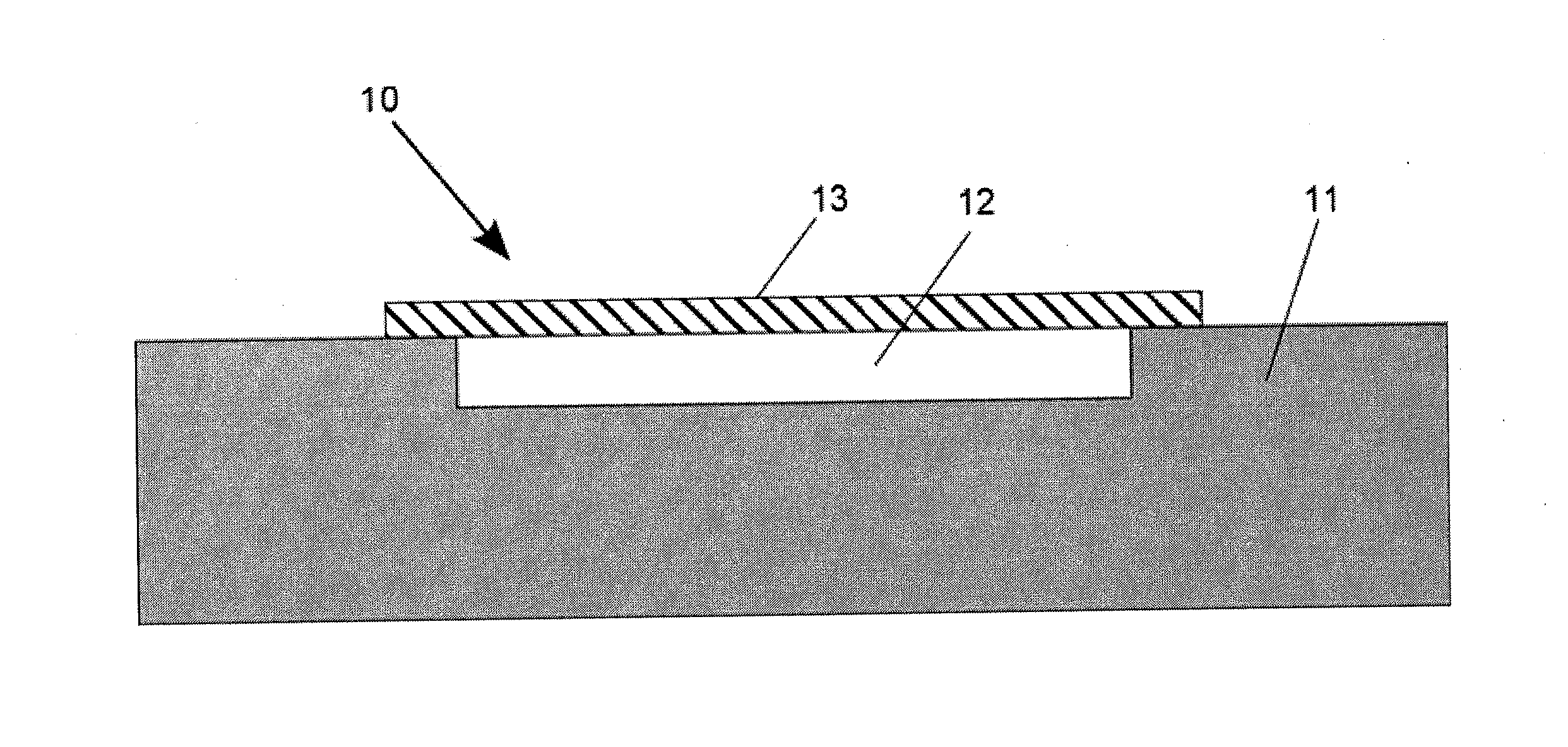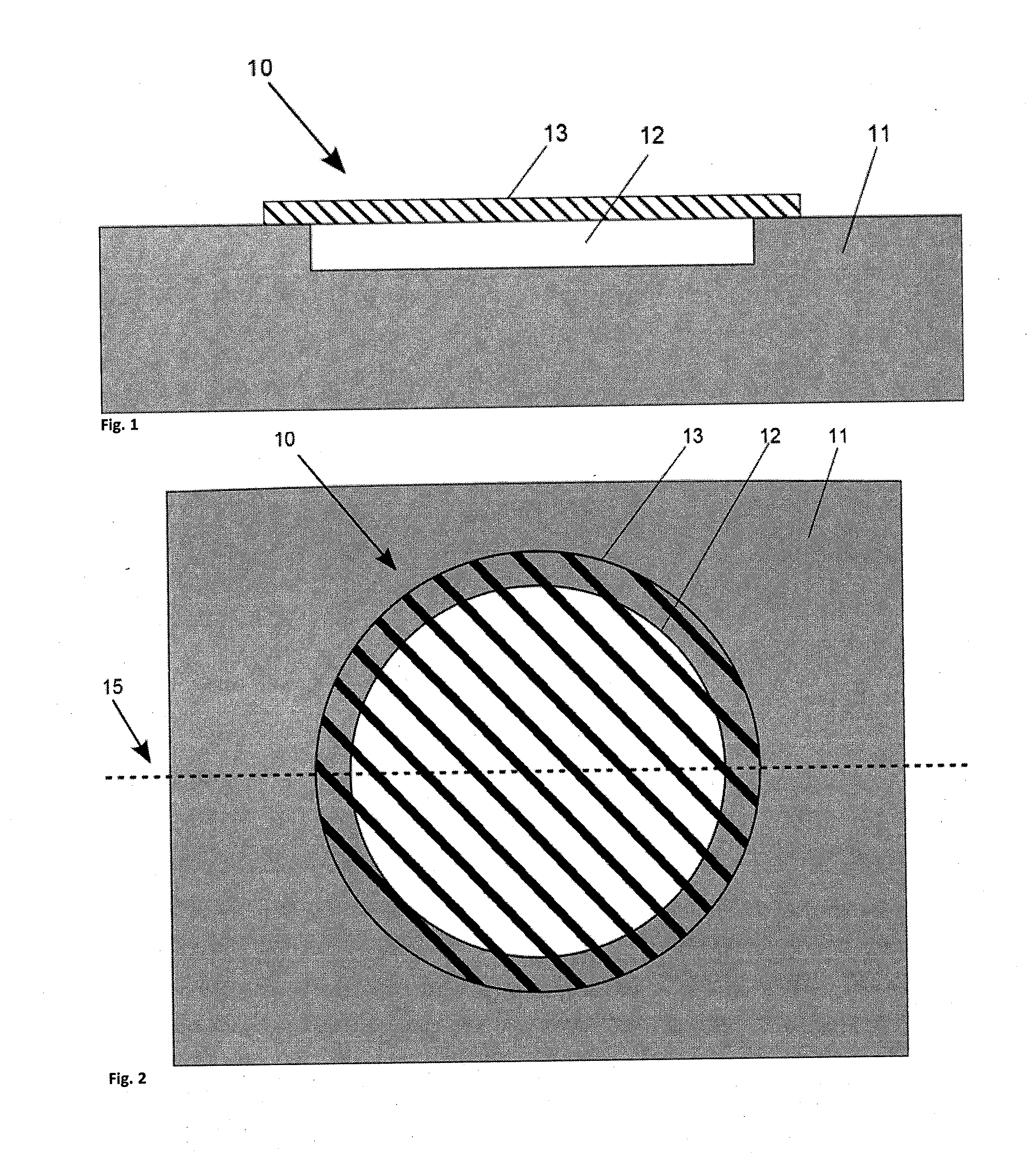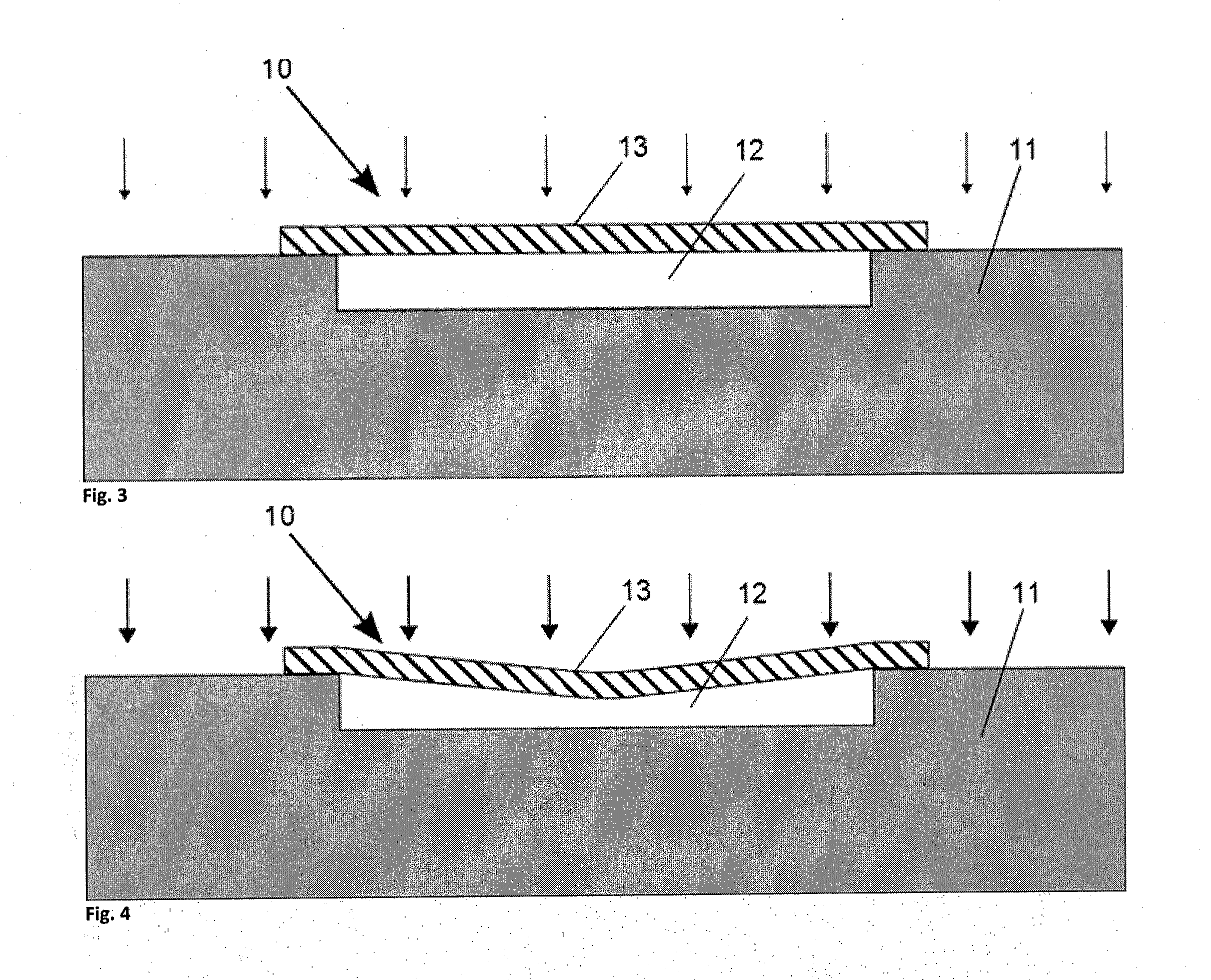Sensor with vacuum cavity and method of fabrication
a vacuum cavity and sensor technology, applied in the direction of fluid pressure measurement by electric/magnetic elements, measurement devices, instruments, etc., can solve the problems of limited performance and/or complicated manufacturing process of conventional electronic devices such as microelectromachanical absolute pressure sensors, process is more complicated and expensive than a standard cmos process, and the accuracy of the roughness of the cavity surface is limited. , to achieve the effect of high capacitance density, low cost and high volum
- Summary
- Abstract
- Description
- Claims
- Application Information
AI Technical Summary
Benefits of technology
Problems solved by technology
Method used
Image
Examples
first embodiment
[0033]Referring now to the invention in more detail, in FIG. 1 and FIG. 2 there is shown a pressure sensor device 10 having a sensor element 13 that is on the top of the carrier 11 and the cavity 12. The sensor element 13 is covering the cavity 12 area so that it is hermetically sealed. The location of cross-section that is used for FIG. 1 is shown by the dashed line 15 in FIG. 2 that represents the top view of the device. Pressure sensor device 10 is used to describe the mechanical actuation of the sensor element 13, for this reason the other parts of the transducer are omitted.
[0034]The deformation of the sensor element 13 of pressure sensor device 10 is shown as a sequence in FIG. 3 to FIG. 7. In the figures eight down pointing arrows are used to depict the ambient pressure. In FIG. 3 the ambient pressure is very low, i.e. essentially the same as in the cavity 12. As a result the sensor element is not deformed by a pressure difference between the cavity and the ambient medium of ...
second embodiment
[0036]Referring now to the invention, in FIG. 8, FIG. 9 and FIG. 10 there is shown a pressure sensor device 20 having a sensor element 24 that is on the top of the carrier 21 and the cavity 23. The sensor element 24 is covering the cavity 23 area so that it is hermetically sealed. The bottom of the cavity 23 is covered by an electrode 22 that forms a capacitor i.e. the transducer together with the sensor element 24. In FIG. 8 the ambient pressure is minimal, therefore the sensor element 24 is not deformed and the capacitance of the pressure sensor device 20 is at its minimum. In FIG. 9 the ambient pressure is increased and as a consequence the sensor element 24 is deformed increasing the capacitance of the device. In FIG. 10 the ambient pressure is high enough to bring the sensor element 24 into a physical contact with the electrode 22. This can be detected as a short circuit of the transducer, which can be used to define the touching point of the pressure sensor device 20.
third embodiment
[0037]Referring now to the invention, in FIG. 11, FIG. 12 and FIG. 13 there is shown a pressure sensor device 30 having a sensor element 34 that is on the top of the carrier 31 and the cavity 33. The sensor element 34 is covering the cavity 33 area so that it is hermetically sealed. Below the cavity 33 embedded in the carrier 31 there is the electrode 32 that forms a capacitor i.e. the transducer together with the sensor element 34. In FIG. 11 the ambient pressure is minimal, therefore the sensor element 34 is not deformed and the capacitance of the pressure sensor device 30 is at its minimum. In FIG. 12 the ambient pressure is increased and as a consequence the sensor element 34 is deformed increasing the capacitance of the device. In FIG. 13 the ambient pressure is high enough to bring the center of the sensor element 34 into a physical contact with the carrier 31. However, as this part of the carrier 31 is made of an insulating material, there will not be short circuit between th...
PUM
| Property | Measurement | Unit |
|---|---|---|
| dielectric constant | aaaaa | aaaaa |
| dielectric constant | aaaaa | aaaaa |
| height | aaaaa | aaaaa |
Abstract
Description
Claims
Application Information
 Login to View More
Login to View More - R&D
- Intellectual Property
- Life Sciences
- Materials
- Tech Scout
- Unparalleled Data Quality
- Higher Quality Content
- 60% Fewer Hallucinations
Browse by: Latest US Patents, China's latest patents, Technical Efficacy Thesaurus, Application Domain, Technology Topic, Popular Technical Reports.
© 2025 PatSnap. All rights reserved.Legal|Privacy policy|Modern Slavery Act Transparency Statement|Sitemap|About US| Contact US: help@patsnap.com



